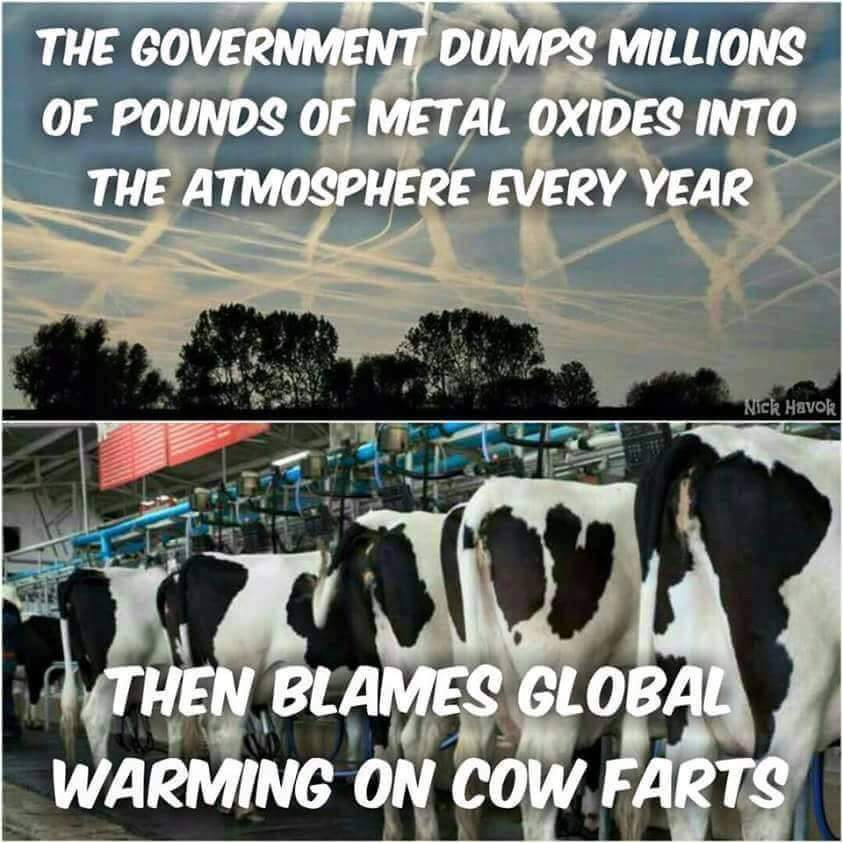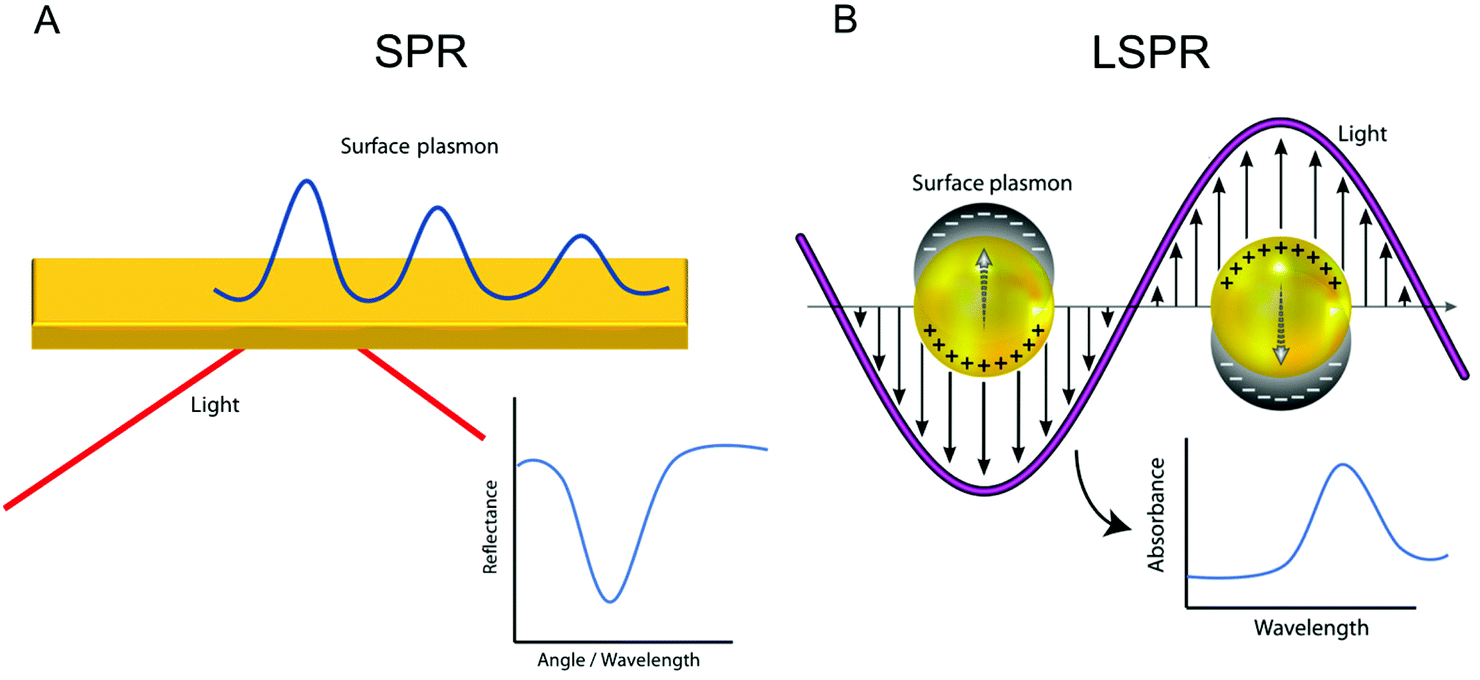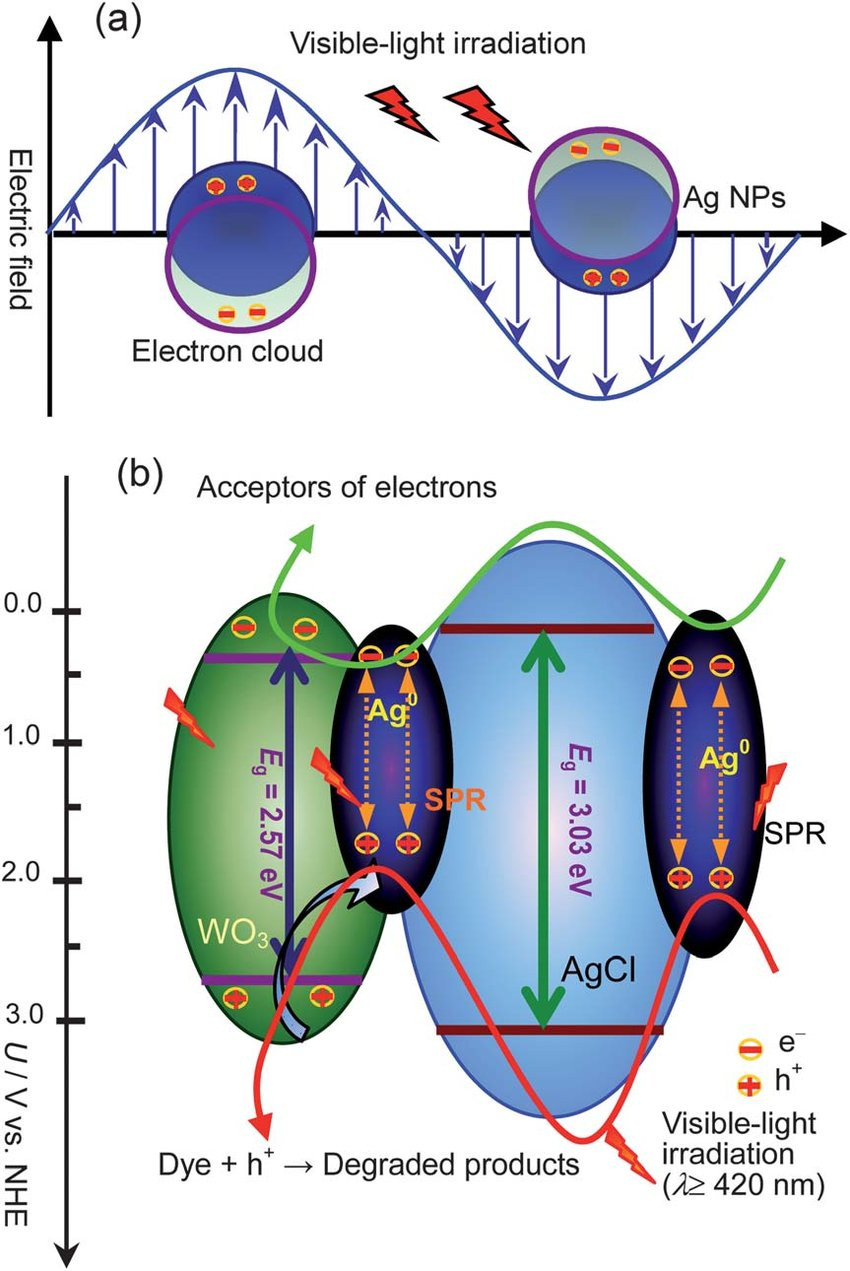So are they spraying nanoparticle viruses that are magnetized by polarization?
Think about it.
Be with GOD and trust his plan... Q TEAM and the 1111 thing too, Looking for the truth dark to LIGHT . #WWG1WGA Took My Oath.
When storm systems move through one of our cloud seeding project areas, a solution containing a small amount of silver iodide is burned from ground-based generators or released from aircraft. Upon reaching the cloud, the silver iodide acts as a condensation nuclei to aid in the formation of snowflakes.
Silver nanoparticles are nanoparticles of silver of between 1 nm and 100 nm in size. While frequently described as being 'silver' some are composed of a large percentage of silver oxide due to their large ratio of surface to bulk silver atoms.
Light-enhanced
Plasmonic effects have been studied quite extensively. Until recently, there have not been studies investigating the oxidative catalytic enhancement of a nanostructure via excitation of its surface plasmon resonance. The defining feature for enhancing the oxidative catalytic ability has been identified as the ability to convert a beam of light into the form of energetic electrons that can be transferred to adsorbed molecules. The implication of such a feature is that photochemical reactions can be driven by low-intensity continuous light can be coupled with thermal energy.
The coupling of low-intensity continuous light and thermal energy has been performed with silver nanocubes. The important feature of silver nanostructures that are enabling for photocatalysis is their nature to create resonant surface plasmons from light in the visible range.
The addition of light enhancement enabled the particles to perform to the same degree as particles that were heated up to 40 K greater. This is a profound finding when noting that a reduction in temperature of 25 K can increase the catalyst lifetime by nearly tenfold, when comparing the photothermal and thermal process.
Superparamagnetic Fe3O4 nanoparticles (NPs)-based hyperthermia is a promising non-invasive approach for cancer therapy. However, the heat transfer efficiency of Fe3O4 NPs is relative low, which hinders their practical clinical applications. Therefore, it is promising to improve the magnetic hyperthermia efficiency by exploring the higher performance magnetic NPs-based hybrid nanostructures. In the current study, it presents a straightforward in situ reduction method for the shape-controlled preparation of magnetite (Fe3O4) silver (Ag) hybrid NPs designed as magnetic hyperthermia heat mediators. The magnetite silver hybrid NPs with core-shell (Fe3O4@Ag) or heteromer (Fe3O4-Ag) structures exhibited a higher biocompatibility with SMMC-7721 cells and L02 cells than the individual Ag NPs.
Importantly, in the magnetic hyperthermia, with the exposure to alternating current magnetic field, the Fe3O4@Ag and Fe3O4-Ag hybrid NPs indicated much better tumor suppression effect against SMMC-7721 cells than the individual Fe3O4 NPs in vitro and in vivo. These results demonstrate that the hybridisation of Fe3O4 and Ag NPs could greatly enhance the magnetic hyperthermia efficiency of Fe3O4 NPs. Therefore, the Fe3O4@Ag and Fe3O4-Ag hybrid NPs can be used to be as high performance magnetic hyperthermia mediators based on a simple and effective preparation approach.
In this study, a highly active catalyst based on copper iodide nanoparticles supported on magnetic aminomethylpyridine functionalized cellulose has been synthesized and characterized. Its catalytic activity was investigated in the multicomponent synthesis of N-sulfonylamidines via an in situ generated sulfonyl ketenimine intermediate under solvent free conditions at room temperature. The desired products were obtained in good to excellent yields at short reaction times. Based on observed results, the synthesized catalyst was an efficient, magnetically separable, recyclable and green catalyst from a natural source.
Magnetic catalysis is a physics phenomenon, which is defined as an enhancement of dynamical symmetry breaking by an external magnetic field in quantum field theory, used for the description of quantum (quasi-)particles in particle physics, nuclear physics and condensed matter physics. The underlying phenomenon is a consequence of the strong tendency of a magnetic field to enhance binding of oppositely charged particles into bound states. The catalyzing effect comes from a partial restriction (dimensional reduction) of the motion of charged particles in the directions perpendicular to the direction of the magnetic field. Commonly, the magnetic catalysis is specifically associated with spontaneous breaking of flavor or chiral symmetry in quantum field theory, which is enhanced or triggered by the presence of an external magnetic field.
The underlying mechanism behind magnetic catalysis[1] is the dimensional reduction of low-energy charged spin-1/2 particles.[2] As a result of such a reduction, there exists a strong enhancement of the particle-antiparticle pairing responsible for symmetry breaking.
For gauge theories in 3+1 space-time dimensions, such as quantum electrodynamics and quantum chromodynamics, the dimensional reduction leads to an effective (1+1)-dimensional low-energy dynamics. (Here the dimensionality of space-time is written as D+1 for D spatial directions.) In simple terms, the dimensional reduction reflects the fact that the motion of charged particles is (partially) restricted in the two space-like directions perpendicular to the magnetic field.
However, this orbital motion constraint alone is not sufficient (for example, there is no dimensional reduction for charged scalar particles, carrying spin 0, although their orbital motion is constrained in the same way.) It is also important that the fermions have spin 1/2 and, as follows from the Atiyah–Singer index theorem, their lowest Landau level states have an energy independent of the magnetic field. (The corresponding energy vanishes in the case of massless particles.) This is in contrast to the energies in the higher Landau levels, which are proportional to the square root of the magnetic field. Therefore, if the field is sufficiently strong, only the lowest Landau level states are dynamically accessible at low energies. The states in the higher Landau levels decouple and become almost irrelevant. The phenomenon of magnetic catalysis has applications in particle physics, nuclear physics and condensed matter physics.
Positively or negatively charged? Positively charged gold nanoparticles can penetrate deep into cell membranes while negatively charged particles do not enter the cell wall at all, but instead prevent it breaking down under certain conditions.
According to the obtained results, the positively-charged silver nanoparticles showed the highest bactericidal activity against all microorganisms tested. ... We found that the surface charge of the silver nanoparticles was a significant factor affecting bactericidal activity on these surfaces.
An electron acceptor is a chemical entity that accepts electrons transferred to it from another compound. It is an oxidizing agent that, by virtue of its accepting electrons, is itself reduced in the process. Electron acceptors are sometimes mistakenly called electron receptors.
Electron acceptors are ions or molecules that act as oxidizing agents in chemical reactions. Electron donors are ions or molecules that donate electrons and are reducing agents.
In chemistry, a free radical is an atom, molecule, or ion that has at least one unpaired valence electron. With some exceptions, these unpaired electrons make radicals highly chemically reactive.
In physics, a charged particle is a particle with an electric charge. It may be an ion, such as a molecule or atom with a surplus or deficit of electrons relative to protons.
God bless.







